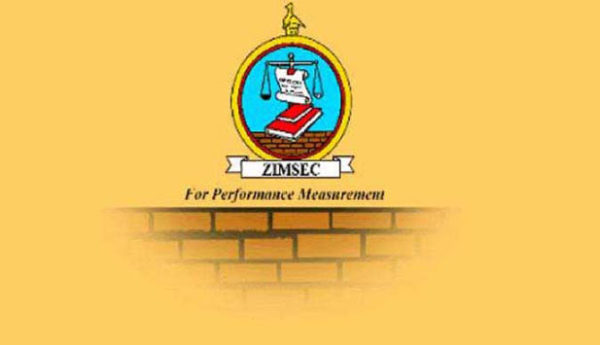
The release of Zimbabwe School Examination Council (Zimsec) Ordinary and Advanced Level 2015 examination results has seen proud parents and guardians of students who produced a string of A grades taking to social media to flaunt their children’s achievements.
Phyllis Mbanje
Some candidates scored as many as 30 points at A’ Level, while others scored 15 A’s at O’Level.

The extra-ordinary results sparked debate, especially on Facebook where some Zimbabweans felt the grades pointed to falling standards at Zimsec.
However, in an analysis of the 2015 O’Level results, Zimsec director Esau Nhandara said examination standards had been benchmarked to previous ones in all the subjects.
“Generally, the performance of the November 2015 candidates was commendable in most subjects,” Nhandara said.
“Reasons for this performance may vary from subject to subject and may only be substantiated by empirical research to confirm the trend in the pass rates.
- Chamisa under fire over US$120K donation
- Mavhunga puts DeMbare into Chibuku quarterfinals
- Pension funds bet on Cabora Bassa oilfields
- Councils defy govt fire tender directive
Keep Reading
“An important point to take note of is that, grading standards have been maintained throughout.
“The standards have been benchmarked to previous ones and maintained in all subjects.”
University of Zimbabwe’s faculty of education dean Oswell Hapanyengwi said public examinations results started improving in 2009 when resources were mobilised by then Education minister David Coltart to re-equip schools with textbooks and other learning materials.
“Students from that period are the ones graduating in recent years and had the opportunity of a good solid foundation which carried them through,” he said.
The educationist said the current economic situation was now creating a competitive edge among students who wanted to make it in a country with only a handful of opportunities to offer.
“The competition is very high and students push themselves in order to position themselves in a country where it is extremely difficult to get ahead with average results.”
His sentiments were echoed by Mufakose 1 High School’s top A’Level student Paddington Dzinzi who got straight As in five subjects.
“There is a lot of competition out there and you just need to be in the top to have an advantage over the others,” he said.
Dzinzi said hard work through study groups and attending lessons helped him to stay focused.
“One has to be dedicated and to keep a level head through it all and having supportive friends and family motivates one to do great,” he said.
The humble teenager, who wants to pursue a medical career or Actuarial science if he gets financial assistance, also said the learning environment was crucial in producing good grades.
“At our school we had a group called the Headmaster’s Group. If you failed to attain at least two Cs during the termly tests, you would be forced to attend this intense study group for three weeks,” he explained.
Nhandara said the general improvement in the quality of results was a result of availability of textbooks and learning systems at schools.
“Any rise or fall in candidate performance would be attributable to teaching and learning processes in schools,” he explained.
Nhandara also said the Education Development Fund (EDF), and the then Education Transition Fund (ETF) of 2011 and 2012 during which all secondary schools received textbook kits, may have contributed to the good results.
“There was a one-to-one textbook-pupil ratio and these resources were used from Form 1 up to Form 4. The cohort of learners who used these books from Form 1 to Form 4 was those who wrote examinations in 2015,” he said.
Qualified and dedicated teachers have also been said to be another contributory factor.
“Teachers are improving themselves academically and many have doctorates which have improved the quality of education in schools,” said the president of the Zimbabwe Teachers Association (Zimta), Richard Gundani.
He also heaped praises on some parents who are instrumental in home schooling of their children to complement the school system.
“The issue of having qualified teachers in secondary schools cannot be ignored as a contributing factor to improved learner performance,” said Nhandara.
Coltart said while it would not be easy to pin-point the real reasons for the exceptional results without a proper study, more resources would help improve pass rates.
“Standards should not drop and resources should be increased,” he said.
Results on average are still below 30% for O’Level and for 2015 there was only a 27,86% pass rate, which was a slight improvement from the 2014 pass rate of just 22,38%. Although the government has banned rating of schools according to pass rates, a Zimsec analysis shows that Masvingo province is once again leading with a 31,9% pass rate followed by the Midlands (29,19), then Manicaland (29,19).
Harare was on fourth position with 28,78% while Mashonaland East had the least pass rate of 22,98%. Matabeleland South was on fifth position with 25,33% followed by Bulawayo with 25,07%, then Mashonaland Central with 24,19%, Matabeleland North 23,95 and Mashonaland West 23,51%.
In 2014, Masvingo had seven schools that attained 100% pass rates at A’Level namely St Anthony’s, Hebron, Zaka High, Chinorumba Secondary, Chatikobo High, Tungwane Secondary and Mutimwi secondary.











